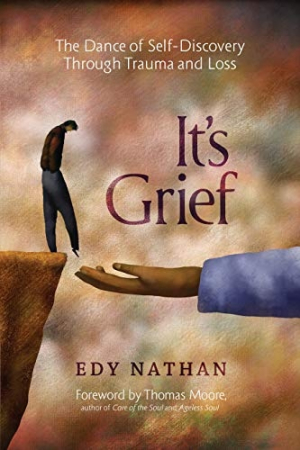
It’s Grief
The Dance of Self Discover Through Trauma and Loss
It’s Grief is a guidebook that will impart hope in the moments when it’s most needed.
Edy Nathan’s self-help book, It’s Grief, charts a gentle forward path through the murkiness of loss.
Grief is universal, yet each person grieves differently, including grieving different losses differently. It’s a bewildering experience that often feels endless. But this book proposes a way forward. It presents a deep understanding of what grief is and what it means to experience loss to help each person move ahead while honoring what’s past. The book demonstrates how the everyday traumas of childhood (like a mother’s perfectionism overpowering a child’s individuality) can lay lifelong foundations for grief—a realization that’s chilling but also provides the comfort of knowing that others are suffering as well.
The book’s scope is broad: Loss doesn’t always mean death; it can include surviving abuse or coping with health issues (yours or someone else’s). This open, nonjudgmental approach lets individuals define losses and their significance for themselves. The approach is empowering, showing how individuals can tailor their responses to loss by prioritizing the relationships, meditative practices, and pace that suits their needs.
The meat of the book is about developing a healthy relationship with grief. To do this, the book says, one must listen to and respond to the needs of their own loss and overcome the desire to run from complicated emotions. The book leads with the heart, using a therapist’s compassionate voice, but also harnessing scientific knowledge of the human body and mind to bring the head into the healing conversation, rather than letting mental extremes of over- and underthinking take control. An examination of neuroplasticity—the brain’s ability to change—is particularly reassuring. This blend of head and heart showcases the shocking resilience of human beings, even in moments when people feel at their weakest.
Rather than rehashing the classic but overly simplistic five stages of grief, the book proposes eleven phases. They include nuanced topics such as confusion about roles in life, repatterning, and fear and anxiety. The phases, rather than being prescriptive, are fluid and individualized, designed so each person can better understand their own grief and give shape to their own experiences.
A toolkit for those who are grieving comes at the end to answer the urgent question What now? It’s practical and doesn’t promise a quick fix. Rather, it’s a guide from the present moment to a manageable next step. The tools discussed include rituals, physical exercise, journal writing, and service.
The book’s writing style is contemplative and moves at a calm, steady pace, lending instinctive permission to take your time. The dance metaphor in the subtitle is carried through the book; it is useful, elegant, and inviting. While the focus is on the individual, the book also showcases the powerful role of relationships in healing. A list of support groups will help grieving audiences connect with others who can sympathize.
It’s Grief is a guidebook that will impart hope in the moments when it’s most needed, forwarding the tools to honor and move through loss.
Reviewed by
Melissa Wuske
Disclosure: This article is not an endorsement, but a review. The publisher of this book provided free copies of the book and paid a small fee to have their book reviewed by a professional reviewer. Foreword Reviews and Clarion Reviews make no guarantee that the publisher will receive a positive review. Foreword Magazine, Inc. is disclosing this in accordance with the Federal Trade Commission’s 16 CFR, Part 255.
